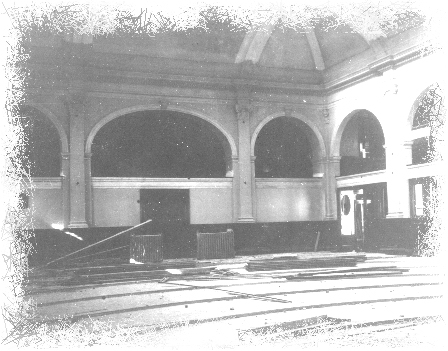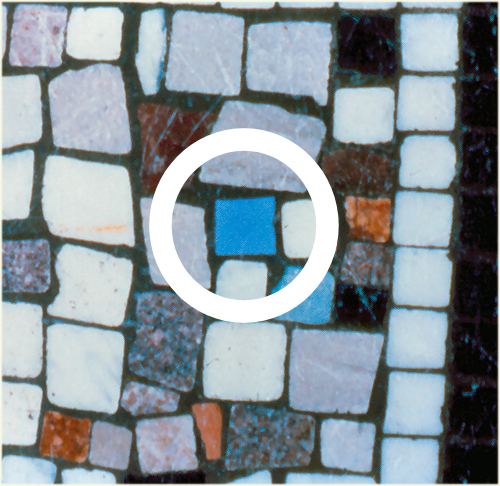|

While the exterior work was being done on the State Capitol, dozens of laborers toiled inside the new facility performing masonry work, electrical wiring and plumbing, building and painting.
As you can see pictured to the right, teams of painters worked on various rooms. In this instance, this team of painters was working on the walls of the Governor's reception room preparing the surfaces.

Other construction took place as well. As soon as a traditional flat surface was laid in the Chamber designated to hold the State House of Representatives, a series of broad tiered levels were installed to enable the people in the back to observe the podium as easily as people in the front.
But observing the Senate Chamber, there was no comparable tiering. With half as many people to consider space for, a need did not exist to elevate the people in the back.
And then there's the scagolia.
Not familiar with the term "scagolia?" Don't feel bad. You're not alone. Because the creation of scagolia is considered a lost art.
The construction of the State Capitol was considered a great expense to the people of South Dakota. Being as frugal and sensible as South Dakotans often are, as long as it didn't impact the artistry of their new Capitol Building, they looked for ways to save money.
During this time of construction, marble columns would have cost up to $1000 each. But if they constructed them in scagolia, they could reduce the cost to only $100 for each column.
The Henry Marble Company of Chicago created these magnificent scagolia columns all through the rotunda and in the legislative chambers.
Under the supervision of Tulilo Duvia, who grew up in the marble quarries of Italy, the scagolia columns were constructed. First, the columns were created from a plaster, and covered by marble dust, ink and yarn. after they are dried and polished, they are very marble-like in appearance.
In the nearly one hundred years years since the columns were created, the technique for creating works of scagolia has been lost to time, rendering the scagolia columns irreplaceable.
Despite it's cost, marble was used in many places around the Capitol Building. The grand stairway and it's railings are all constructed out of marble, as well as the wainscotings of the first, second and third floors.
You'll find marble in the Senate Chambers, as well as in original drinking fountains in the Capitol located adjacent to the Governor's office, and just outside the House and Senate chambers.
If you look at the floors in the Capitol, the mosaic floors are made up of thousands upon thousands of small pieces of marble laid in mosaic patterns.
As the legend goes, the floors were laid by 66 Italian workers who each left a signature blue tile as pictured at the left all over the Capitol.
Only 55 tiles are visible to the public. There is some debate as to whether or not there actually were 66 workers, but it's entirely possible that additional blue stones are hidden under desks, file cabinets, or even carpet.
In fact, in just in the few months preceding this writing, an additional two tiles were discovered by workers installing carpet in the Capitol building, bringing the grand total of known tiles up to 57.
However, these additional tiles within regularly used office space have been recovered, and are once again hidden away to be discovered in another time.
Next -
The Decorated Capitol
Copyright 2007 South Dakota Bureau of Administration | Frontpage-Templates.org | E-Mail BOA Webmaster


